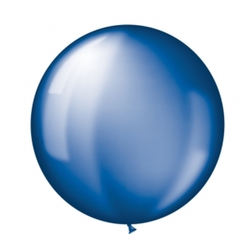An Inflated Balloon - Which Is True?
 A spherical balloon is inflated until its volume becomes 27 times its original volume.
Which of the following is true?
A spherical balloon is inflated until its volume becomes 27 times its original volume.
Which of the following is true?
This section requires Javascript.
You are seeing this because something didn't load right. We suggest you, (a) try
refreshing the page, (b) enabling javascript if it is disabled on your browser and,
finally, (c)
loading the
non-javascript version of this page
. We're sorry about the hassle.
10 solutions
Discussions for this problem are now closed
I would like to know why this problem cannot be solved using differentiation. Thanks
because he didn't mention the rate at which it is increasing, had it been rate of increase we'd use differentiation!
Since volume of baloon is pia X r cube ,and inflated 27 times so radius 3 X9 =27 that means it's volume is 9 times the original volume.and surfaqce area is directly proportional so increase in surface area is 9 times -Ans K.K.GARG,india
clear & excellent
V=(4/3)πr^3 27V=(27)(4/3)πr^3=(4/3)π(3r)^3 S=4πr^2 4π(3r)^2=(9)(4πr^2 )=9S Surface area increased by 9 times
the answer is coming: 9*(4πr^3) but surface area is 4πr^2 not ^3
A r e a b e f o r e A r e a a f t e r = 4 π r b e f o r e 2 4 π r a f t e r 2 = ( r b e f o r e r a f t e r ) 2 V o l u m e a f t e r = 2 7 × V o l u m e b e f o r e 3 4 π r a f t e r 3 = 2 7 × 3 4 π r b e f o r e 3 r a f t e r 3 = 3 3 × r b e f o r e 3 r a f t e r = 3 × r b e f o r e A r e a b e f o r e A r e a a f t e r = ( r b e f o r e 3 r b e f o r e ) 2 = 3 2 = 9
Area of the inflated balloon is 9 times larger than area of the balloon before inflation.
Good, but all that is needed is to utilise scale factors. Volume is 3 cubed, so surface area increase is 3 squared; 9. I admire your efforts though
true
how is it possible, by inflating a sphere its volume and surface area should remain same.
Volume is directly proportional to r^3 Surface Area is directly proportional to r^2 r^3 =27. r^2 = 9
This is the best answer in my opinion, since it doesn't make things absurdly complex.
Common sense problem.
Area of sphere = 4πr^2
Volume of sphere = 27* (4/3 πr^3) = 9*Vol. of sphere
New = Old 4/3 πr^3 = 27(4/3 πr^3 ) r^3 = 27(r^3 ) ∛(r^3 ) = ∛(〖27r〗^3 ) r=3r S.A. = 4πr^2 = 4π(3r)^2
= 4π(9r^2)
=9(4πr^2)
We know That V= 4/3 π r^3 S.A= 4π r^2 means that : V =( S.A) * r/3 27 V =(S.A * r/3 ) *27 27 V= ( r^3 4π ) *27 /3 27 V =9 times
The formula for the surface area of a sphere is: S.A. = 4 π r²
The formula for the volume of a sphere is: V = 4/3 π r^3
Divide to get the ratio: = (4 π r²) / (4/3 π r^3 )
You cancel out a 4, π and r² 1 : r/3
Multiply both sides by 3: 3 : r
Answer: 3 : r
surface : volume of sphere = 3 : radius of sphere
This is just an additional information that I would like to share since it's related to the question above. Thanks! :)
Volume varies directly with the cube of the radius, while surface area varies with the square.
(27^(1/3))^2 = 3^2 = 9.
since volume of sphere is directly proportional to cube of radius hence new radius=(27 old)^(1/3) =3 old and we know that surface area is directly proportional to squre of radius hence surface area increased by 3^2=9 times
Volume is third dimensional area is second dimensional So to convert from volume to surface area do cube root squared 27^(1/3)^2 = 9
Vol. of Sphere=(4/3)πr^3.
Surface Area of Sphere=4πr^2. Hence, if vol. of sphere increases (a^3) times, surface area increases (a^2) times. Here vol. increases 27(3^3) times, hence area increases 3^2=9 times.
New = Old
4/3 πr^3 = 27(4/3 πr^3 )
r^3 = 27(r^3 )
∛(r^3 ) = ∛(〖27r〗^3 )
r=3r
S.A. = 4πr^2